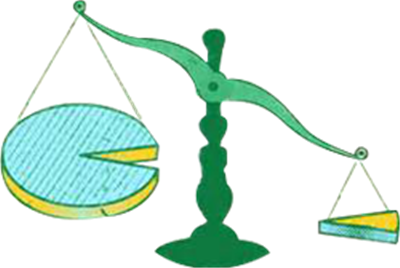(单词翻译:单击)
In 1920, the 1 per cent — the top percentile of the income distribution — accounted for 15-20 per cent of total gross income in developed countries. Germany was strikingly unequal, while the most egalitarian societies were countries such as Australia, Canada and the US, made up largely of immigrants.
1920年,发达国家中收入最高的1%人口占了全部总收入的15%到20%。德国的不平等程度令人吃惊,而最平等的社会是像澳大利亚、加拿大及美国这样的主要由移民建立的国家。
In the 50 years that followed, the share of the 1 per cent fell almost everywhere by about half, to 7-10 per cent of total income. The relative decline in the standing of the top 0.1 per cent was even more dramatic.
在这之后的50年间,这1%人口所占财富比例几乎在所有地方都下降了约一半,至总收入的7%到10%。收入最高的0.1%人口财富比例的相对下降甚至更加明显。

I will focus on the experience of the 1 per cent in Britain, France, Germany and the US, drawing on Atkinson and Morelli’s Chartbook of Economic Inequality, a comprehensive analysis of gross income — but other economically advanced countries (Australia, Canada, Netherlands, Sweden) tell much the same story.
我将主要关注英国、法国、德国和美国的这1%人口的经历,借助托尼•阿特金森(Tony Atkinson)和萨尔瓦托雷•莫雷利(Salvatore Morelli)对总收入的全面分析——Chartbook of Economic Inequality。但其他经济发达国家(澳大利亚、加拿大、荷兰及瑞典)的情况也大致相同。
During that half century, public spending on health, education and especially social benefits increased; taxation became more burdensome and more progressive. The forces of equalisation were powerful indeed.
在这半个世纪里,投入医疗、教育,特别是社会福利的公共支出有所增加;税负变得更加沉重、累进程度更高。均等化的推动力量确实强大。
By 1970, West Germany was still a conspicuously unequal outlier, with the top 0.1 per cent receiving more than twice the share of the equivalent group in Britain, France or the US. The German Mittelstand, the medium-sized family-controlled enterprises that drive export success, had created a cadre of very well remunerated business owners, and continues to do so.
1970年,西德仍呈现出明显的不平等,收入最高的0.1%人口的收入是他们在英国、法国或美国对应群体的两倍多。在德国,推动出口成功的家族控制的中小型企业(Mittelstand)催生了一批收入极高的企业主,这一局面持续至今。
From 1970, the egalitarian trend came to an end everywhere. But experiences diverged. In France and Germany the share of the top 1 per cent and 0.1 per cent has remained flat. In the US it has soared: the top 1 per cent now earn relatively more than they did in 1920. Britain has also experienced a sharp rise in the share of top incomes, although this reversal is not as dramatic as in the US, and the UK figures are still well below those of 1920. What has happened in other states seems to reflect cultural origins: Canada and Australia look rather like the UK, and the Netherlands rather like Germany.
1970年之后,平等主义的势头在各国都走到终点。但各国的经历有所不同。在法国和德国,收入最高的1%和0.1%人口占有财富的比例与以往持平。在美国,这一比例已经骤升:收入最高的1%人口如今的相对收入高于1920年。英国收入最高人口的财富比例也经历了大幅上升,虽然这一逆转不像美国那样戏剧化,英国的数据仍远低于1920年水平。其他国家发生的事似乎反映了文化上的渊源:加拿大和澳大利亚看起来更像英国,而荷兰更像德国。
To understand the trends, and their implications, we need more data on who the top 1 per cent are — and tax authorities are coy about telling us. A survey in the US shows that about one-third of the top 1 per cent, and more of the top 0.1 per cent, are corporate executives.
要理解这些趋势及其影响,我们需要更多的数据——了解收入最高的1%人口是谁,但税务部门不太愿意公开此类信息。美国的一项调查显示,这1%人口中约三分之一是企业高管,而且这些人在收入最高的0.1%人口中占比更大。
Almost a quarter of the 1 per cent are doctors or lawyers, although there are fewer among the very highest paid. The phalanx of affluent medics and attorneys is probably a distinctively US phenomenon: in other countries, public health systems and more limited roles for litigation keep these incomes under more control.
在1%人口中,近四分之一是医生或律师,尽管在最顶端高收入者中较少有这两种职业。富裕的医生和律师群体可能是美国特有的现象:在其他国家,公共卫生系统以及比较有限的诉讼角色使他们的收入处于更多的控制之下。
But the big change since the 1970s has, of course, been in the representation of finance professionals: their share in the top 1 per cent of incomes has risen from 8 per cent to 14 per cent; and, among the top 0.1 per cent, from 11 per cent to 18 per cent. Since the income level needed to put you in the 1 per cent has increased dramatically, this understates how much the growth of finance has contributed to inequality in income distribution.
但自上世纪70年代以来,最大变化当然体现于金融专业人士的比例:他们在1%人口中的比例已从8%上升至14%;而且,在收入最高的0.1%人口中,从11%升至18%。由于跨入这1%人口的收入门槛已大幅提高,这低估了金融业壮大对于加剧收入分配不平等的影响。
The rise in inequality in some western countries is principally the result of two interrelated causes: the growth of the finance sector; and the explosion of the remuneration of senior executives. The people who ran big companies were always relatively well paid, but the meaning of “relatively well paid” is now altogether different. Finance employs more people, recruits more able people and pays them a lot more.
在一些西方国家,不平等的加剧主要是由两个相互关联的因素造成的:金融业的壮大以及高管薪酬的爆炸性增长。管理大公司的人历来获得相对高薪,但如今“相对高薪”的内涵已完全不同。金融业雇用更多的人,招募更多优秀人才,并付给他们高得多的薪酬。
These effects have not been seen in countries, such as France and Germany, that have proved more resistant to financialisation. It is in Britain and the US, which have experienced the most extensive growth in the sector, where they have made their greatest impact.
这些影响并没有出现在法国和德国等国,这些国家已被证明对经济金融化更有抵抗力。而英国和美国经历了最广泛的金融业增长,金融业在这两个国家产生的影响也最大。


